If you’re a cat owner, you know how embarrassing it can be to invite friends when your house smells like a litter box.
One of cat parents’ most common challenges is controlling litter box odor and keep your home clean.
In this in-depth article, we’ll explore everything you need to know about cat litter and how to choose the best one for odor control.
Let’s start with our top pick first!
Contents
ToggleOur Top Picks
Best Overall: Dr. Elsey’s Premium Cat Litter

- Ingredients: 100% bentonite clay
- How much per pound: $0.83/lbs
- Clumping or no clumping: Clumping
- Scented or unscented: Unscented
- Dust level: 99.9% dust-free
- Easy scooping and reducing waste
- Low tracking and minimal mess
- Superior odor control
- Hypo-allergenic, safe for cats and humans
- Ideal for sifting and mechanical litter boxes
- Good for kittens
- Heavy and bulky to carry and pour
- Pricy
- May stick to the litter box or the scoop if not cleaned regularly
- May not work well for cats with long hair or sensitive paws
Best Value: Scoop Away Super Clump Cat Litter

- Ingredients: Clay
- How much per pound: $0.48/lbs
- Clumping or no clumping: Clumping
- Scented or unscented: Unscented
- Dust level: Dust free
- Strong and fast clumping
- Effective odor control that lasts for 7 days
- Low tracking and minimal mess
- No added dyes or perfumes
- Heavy and bulky
- May stick to the litter box or the scoop if not cleaned regularly
- May not work well for cats with allergies or respiratory issues
Best Natural: Purina Tidy Cats Natural Cat Litter
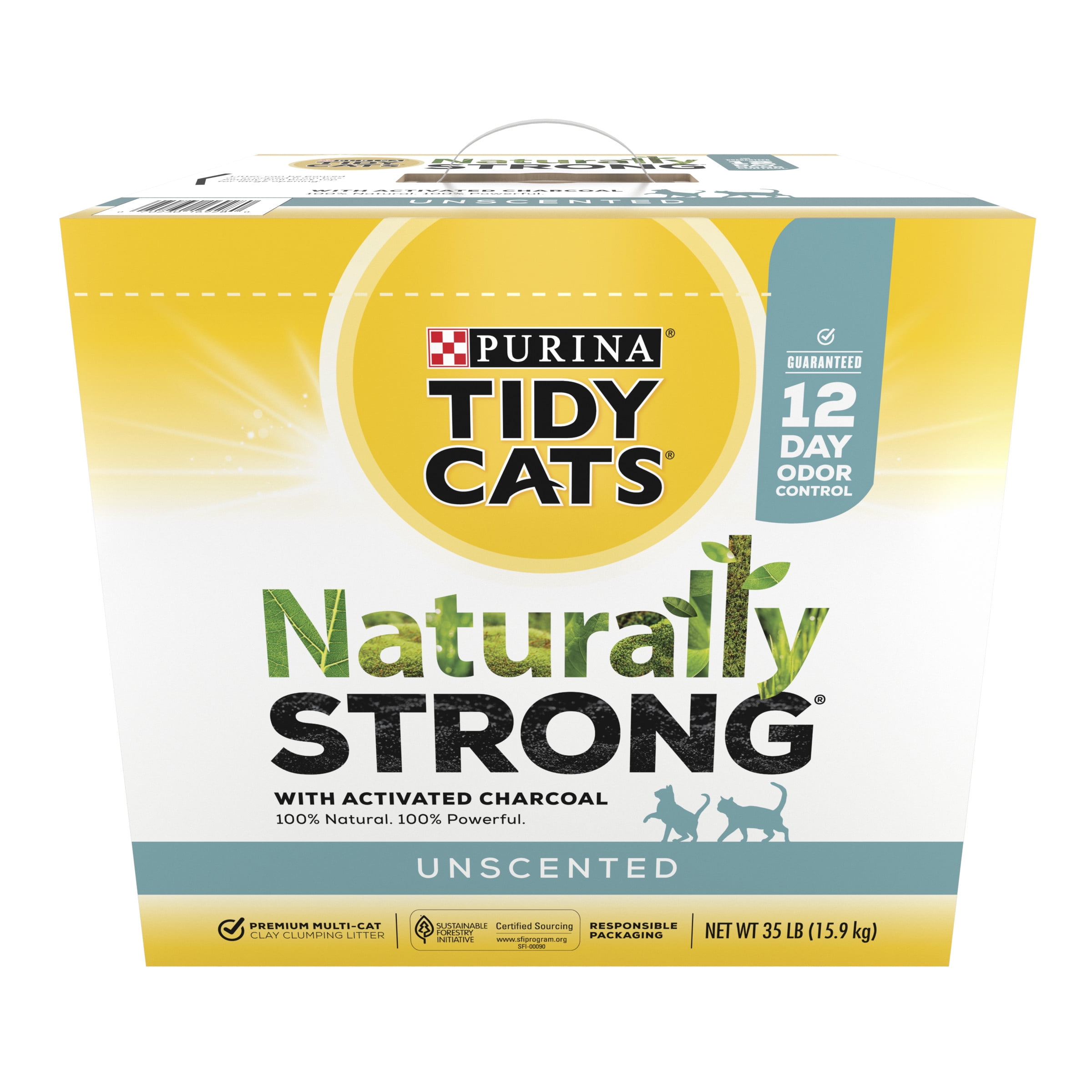
- Ingredients: Naturally strong clay
- How much per pound: $0.66/lbs
- Clumping or no clumping: Clumping
- Scented or unscented: Unscented
- Dust level: 99.9% dust-free
- Natural and powerful odor control that lasts for 12 days and uses activated charcoal to trap odor molecules
- Fast and tight clumping
- No added dyes or fragrances
- Recyclable paper packaging
- A little pricy
Best Unscented: Arm & Hammer Clumping Litter

- Ingredients: Clay and baking soda
- How much per pound: $0.68/lbs
- Clumping or no clumping: Clumping
- Scented or unscented: Unscented
- Dust level: 99% dust-free
- Effective odor control. Uses baking soda crystals and ammonia odor neutralizers
- Strong and fast clumping
- Low tracking and minimal mess
- Ideal for households with two or more cats
- A little pricy
- Heavy and bulky
Best Clumping: Flesh Step Outstretch Litter

- Ingredients: clay and carbon
- How much per pound: $0.5/lbs
- Clumping or no clumping: Clumping
- Scented or unscented: Unscented
- Dust level: low-dust
- Fast-acting clumping
- Long-lasting and concentrated litter
- Effective odor control with carbon
- No added dyes or perfumes
- A little pricy
- Heavy and bulky
Best for Multiple cats: Scoop Away Multi-Cat Litter

- Ingredients: Clay
- How much per pound: $0.92/lbs
- Clumping or no clumping: Clumping
- Scented or unscented: Scented
- Dust level: dust free
- Target on multiple cats family specifically
- Individual packages
- Expensive
- Might stick on paws sometimes
Best Flushable: sWheat Scoop Natural Cat Litter

- Ingredients: Made of wheat and corn
- How much per pound: $0.96/lbs
- Clumping or no clumping: Clumping
- Scented or unscented: Lightly scented
- Dust level: low dust level
- All-natural, biodegradable and flushable
- Neutralizes urine and ammonia odors quickly
- Safe for pets and people
- Suitable for multiple cats
- Environmentally friendly
- Expensive
- May attract bugs or mold
- May not mask strong odors
Best Dustless: ARM & HAMMER Cloud Control Litter

- Ingredients: Not specified. With baking soda.
- How much per pound: $0.95/lbs
- Clumping or no clumping: Clumping
- Scented or unscented: Scented
- Dust level: No cloud of nasties. Dust free
- Excellent cloud control
- Hypoallergenic light scent
- Effective odor control
- Expensive
Join Our Maine Coon-Loving Family
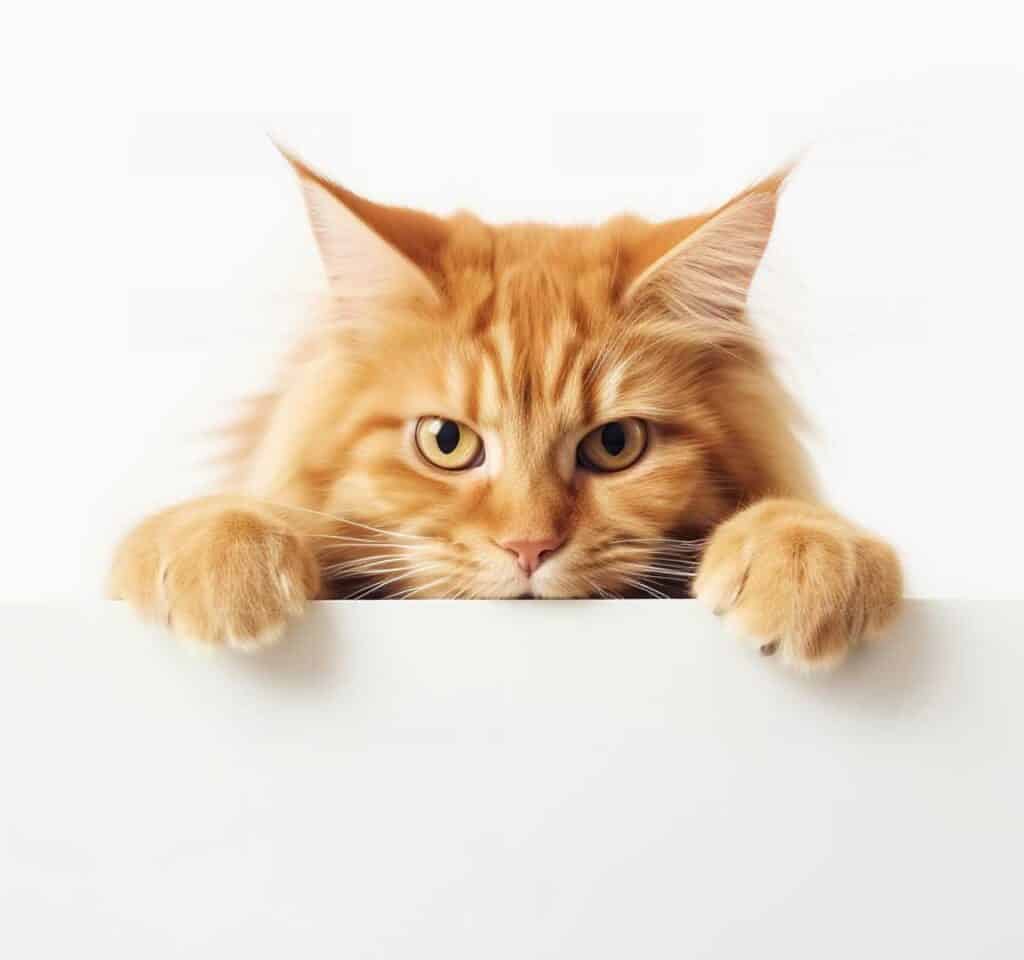
What Are Cat Litter?

Cat litter is a product designed for cats to use as a bathroom.
It’s usually made from various materials, including clay, silica gel, corn, wood, and recycled paper.
Cat litter serves several purposes:
-
- It provides a comfortable and familiar place for your cat to eliminate waste.
-
- It absorbs urine and controls odor.
-
- It allows for easy waste removal.
Cats are naturally clean animals and prefer a designated place to do their business.
By providing them with a litter box filled with cat litter, you’re meeting their instincts and making them feel more comfortable in your home.
For cat parents, cat litters help us to clean the mess.
It helps absorb liquids and odors and makes waste easy to scoop.
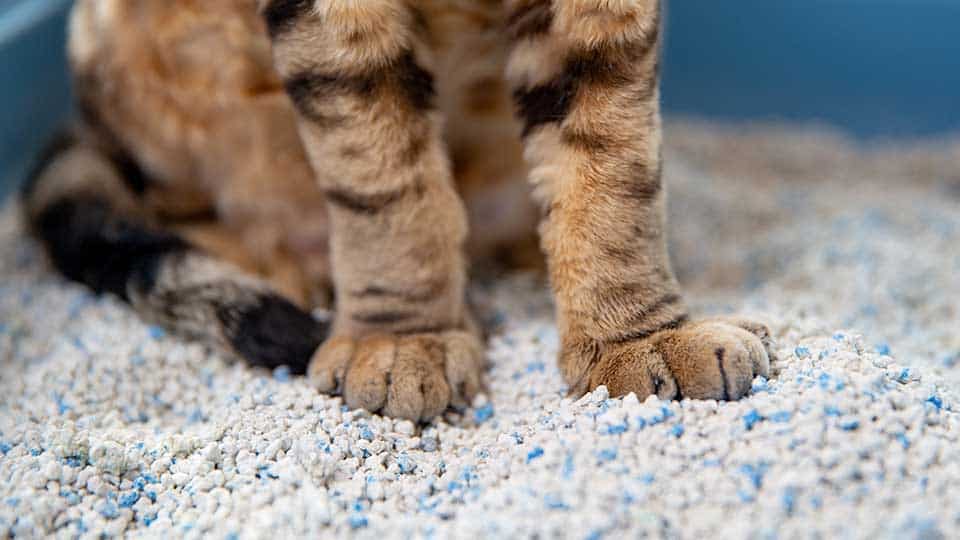
How Does the Litter Work & How to Use the Cat Litter?
Cat litter works by absorbing your cat’s urine and trapping the odor.
Clumping litters form solid clumps when they come into contact with liquid, making it easy to scoop out and dispose of the waste.
Non-clumping litters typically have a higher absorption rate and rely on regular stirring to maintain a clean surface.
To use cat litter:
- Fill a clean litter box with 2-3 inches of litter (follow the manufacturer’s recommendations).
- Place the litter box in a quiet, easily accessible area.
- Scoop out waste daily and dispose of it in a sealed bag.
- Regularly top up the litter to maintain the ideal depth.
- Clean the litter box and replace the litter entirely at least once a month.

What cause Litter Box Odor?
Litter box odor is primarily caused by the waste your cat eliminates, specifically the ammonia and other volatile compounds found in urine and feces.
Bacteria and mold can also contribute to the smell, especially if the litter box isn’t cleaned regularly.
Other causes include:
Litter type: Non-clumping litter releases more odor as waste is harder to scoop. Clumping litters contain odor better.
Medical issues: The urine may have a strong smell if a cat has a urinary tract infection. In rare cases, other medical problems could contribute to odor.
Litter box location: A litter box in an unventilated area will make odors worse due to a lack of air circulation.
How to Control Litter Box Odor?
To control litter box odor, follow these tips:
- Scoop daily: Removing waste every day helps prevent odor buildup. Empty the litter at least once a month.
- Clean the litter box regularly: Wash the container with mild soap and water at least once a month. Remember to rinse and dry the boxes completely.
- Use the right amount of litter: Too little litter can lead to a dirty box, while too much can be wasteful. Follow the manufacturer’s recommendations for the ideal amount.
- Choose the right litter: Opt for a high-quality, odor-controlling litter. Clumping and unscented litter are recommended for odor control. Clumping litter clumps waste to contain odor, while unscented litter avoids mask smells so you notice odor buildup and can address it.
- Use a litter box deodorizer: These products can help neutralize odors between cleanings.
- Provide adequate ventilation: Make sure your cat’s litter box area is well-ventilated. Good airflow helps keep odors to a minimum.
Last but not least, switch litters if needed. If odor is an ongoing issue, change to a different type of litter or other brands.
What to Look For in Odor-Controlling Litter?
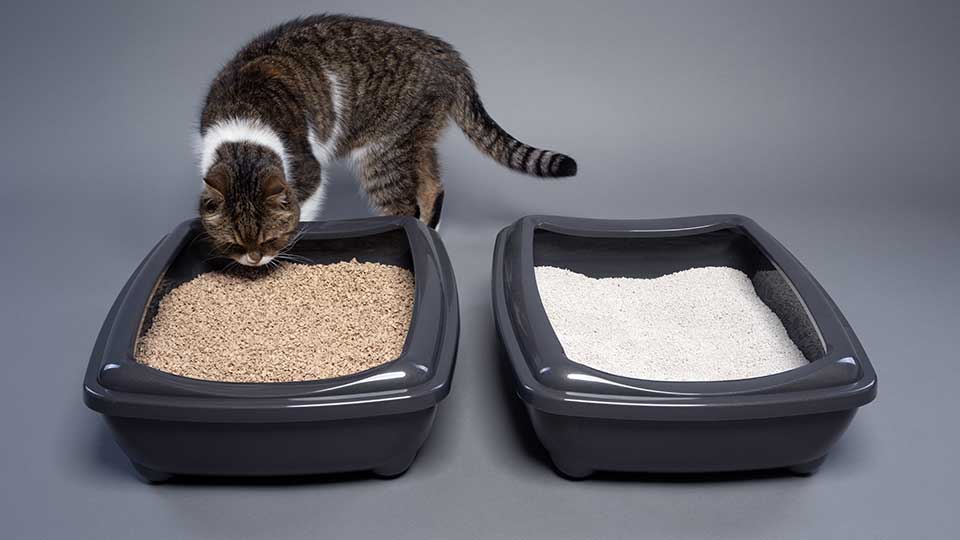
When searching for the best odor-controlling litter, there are always debates.
Clumping vs. Non-clumping
In general, clumping litter contains odor better by clumping waste together.
Clumping clay and clumping paper litters are good options.
Non-clumping clay litter releases more odor as waste is loose in the litter.
Silica crystal is a decent non-clumping option with moderate odor control.
Unscented vs. Scented
Unscented litter avoids masking odors with fragrances so you can properly assess odor buildup.
Lightly scented or naturally fragranced litters can still work, but heavily scented litter may mask odor without controlling it.
You can pick one for you cats by the following factors:
- Absorbency: Look for litter with a high absorption rate to trap urine quickly and prevent odors.
- Clumping ability: Clumping litters make it easier to remove waste and maintain a clean litter box.
- Odor neutralizers: Some litters contain ingredients like activated charcoal or baking soda to neutralize odors.
- Dust-free: A low-dust litter can reduce respiratory irritation for both you and your cat.
- Natural materials: Clumping paper and clay litters, especially those treated with odor control additives, tend to reduce odor best. Silica litter also has some odor-reducing properties. Litters made from natural materials like corn, wood, or paper can be more eco-friendly and less likely to cause allergies.
- Multiple cat formula: Litters marketed for multi-cat homes often have extra odor control additives and moisture-locking treatments to handle the higher waste volumes. These can be very effective, especially for urine odor control.
Frequently Asked Questions
Are Cat Litter Flushable?
While some cat litter brands claim to be flushable, it’s generally not recommended to flush cat litter down the toilet.
Flushing litter can cause plumbing issues and harm the environment, as it may contribute to water pollution.
In some of places, it is forbidden by local regulation to do so.
Always dispose of cat litter according to local regulations and the manufacturer’s guidelines.
What Kind of Cat Litter Absorb Urine?
Most cat litter are designed to absorb urine, but some materials are more absorbent than others. Highly absorbent cat litters include:
-
- Clumping clay litters
-
- Silica gel crystals
-
- Wood-based litters (e.g., pine or cedar)
-
- Corn-based litters
-
- Paper litters
Is Scented or Unscented Cat Litter Better?

While scented cat litter may help mask odors, it’s essential to consider your cat’s preferences and sensitivities.
Some cats may be sensitive to strong fragrances and avoid using scented litter.
Unscented litter, on the other hand, focuses on controlling odors without added fragrances.
It’s generally recommended to start with an unscented litter and only switch to a scented option if your cat is comfortable with it.
How to Choose Cat Litter for Multiple Cats?
When choosing litter for a household with multiple cats, consider the following:
-
- High absorbency: With multiple cats using the litter box, a highly absorbent litter is essential to control odors effectively.
-
- Strong clumping: A litter that forms solid clumps makes it easier to keep the litter box clean and fresh.
-
- Low tracking: Cats can track litter around the house, so choose a low-tracking option to minimize mess.
-
- Dust-free: A low-dust litter can help reduce respiratory irritation for both you and your cats.
-
- Unscented or mildly scented: Strong fragrances may deter some cats from using the litter box. Start with an unscented or mildly scented option to accommodate all your cats’ preferences.
We hope this guide helps you better understand cat litter and pick the best one for odor control.
Remember always to prioritize your cat’s preferences and sensitivities when selecting a litter, and maintain a clean litter box for a happy, healthy home.
Happy scooping!

People Also Read
5 Best Dry Cat Food for Indoor Cats 2023: Everything You Need to Know
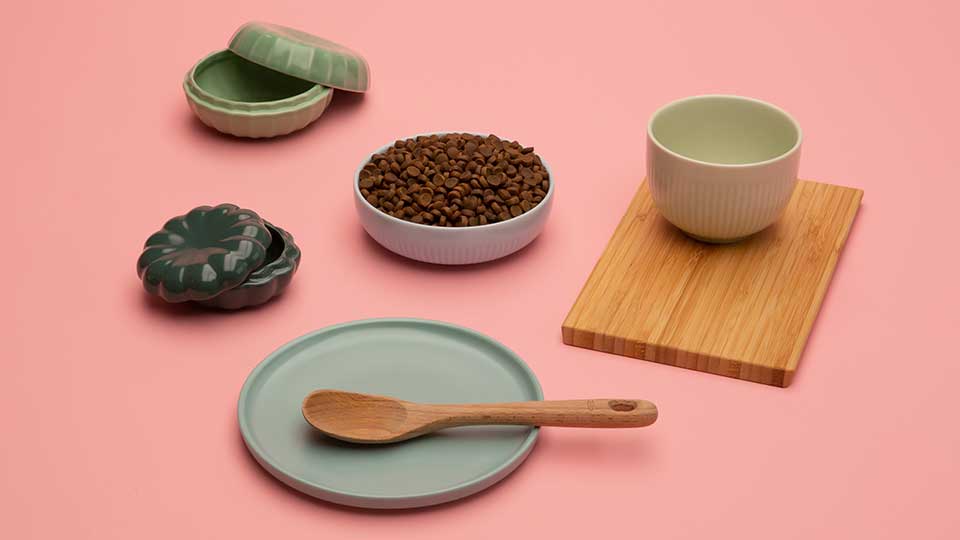
If you have an indoor cat, you might wonder what kind of dry cat food is best for them.
Indoor cats have different nutritional needs than outdoor cats, as they tend to be less active and more prone to weight gain, hairballs, and urinary issues.
Therefore, they need dry cat food that is high in protein, low in calories, and rich in fiber and moisture… Read More
